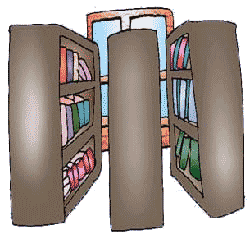Using Reference Sources
 As you go through school, you will need to use reference sources to find information about topics, locate facts, and answer questions. Here are five types of reference sources you should use. Each type is available in print forms, on CD-ROMs, and on the Internet.
As you go through school, you will need to use reference sources to find information about topics, locate facts, and answer questions. Here are five types of reference sources you should use. Each type is available in print forms, on CD-ROMs, and on the Internet.
- DictionaryA dictionary provides information about the meaning, pronunciation, and spelling of words. Unabridged dictionaries attempt to be complete by including all words currently in use in a language. They provide extensive information about the words included. Abridged dictionaries omit words that do not regularly appear in books, magazines, and newspapers. Specialized dictionaries provide detailed information about the words that apply to a particular subject such as space, math, biology, psychology, and many more. They include technical words that are rarely used outside of the subject.
- ThesaurusA thesaurus contains synonyms for commonly used words. A synonym is a word that has the same meaning or nearly the same meaning as another word. For example, “simple” is a synonym for “easy.” A thesaurus contains many more synonyms for a word than does a dictionary. A thesaurus can help you precisely express your ideas when writing.
- EncyclopediaAn encyclopedia contains articles on a variety of subjects. The articles are written by experts on each of the subjects. In addition to articles, encyclopedias may include illustrations and diagrams, definitions of some words, and references to additional information. A general encyclopedia includes overview articles on a wide range of topics. A subject encyclopedia contains longer and more detailed articles on specific topics, events, or fields of study.
- AlmanacAn almanac is an annual single-volume reference source that contains useful facts about a wide range of topics. You can learn about countries of the world, government, historical events, and many other topics. Because almanacs are revised each year, the information is current.
 AtlasAn atlas is a collection of maps. The most common atlas contains maps that show the political and physical features of countries throughout the world. A political map shows government boundaries. A physical map shows the features of the earth’s surface such as mountains, deserts, and bodies of water. You may also use a road map to learn how to get from place to place. There are also specialized atlases for such things as weather across the world, oceans of the world, and even the anatomy of the human body.
AtlasAn atlas is a collection of maps. The most common atlas contains maps that show the political and physical features of countries throughout the world. A political map shows government boundaries. A physical map shows the features of the earth’s surface such as mountains, deserts, and bodies of water. You may also use a road map to learn how to get from place to place. There are also specialized atlases for such things as weather across the world, oceans of the world, and even the anatomy of the human body.
Wherever you study, be sure you have access to each of these important reference sources.
